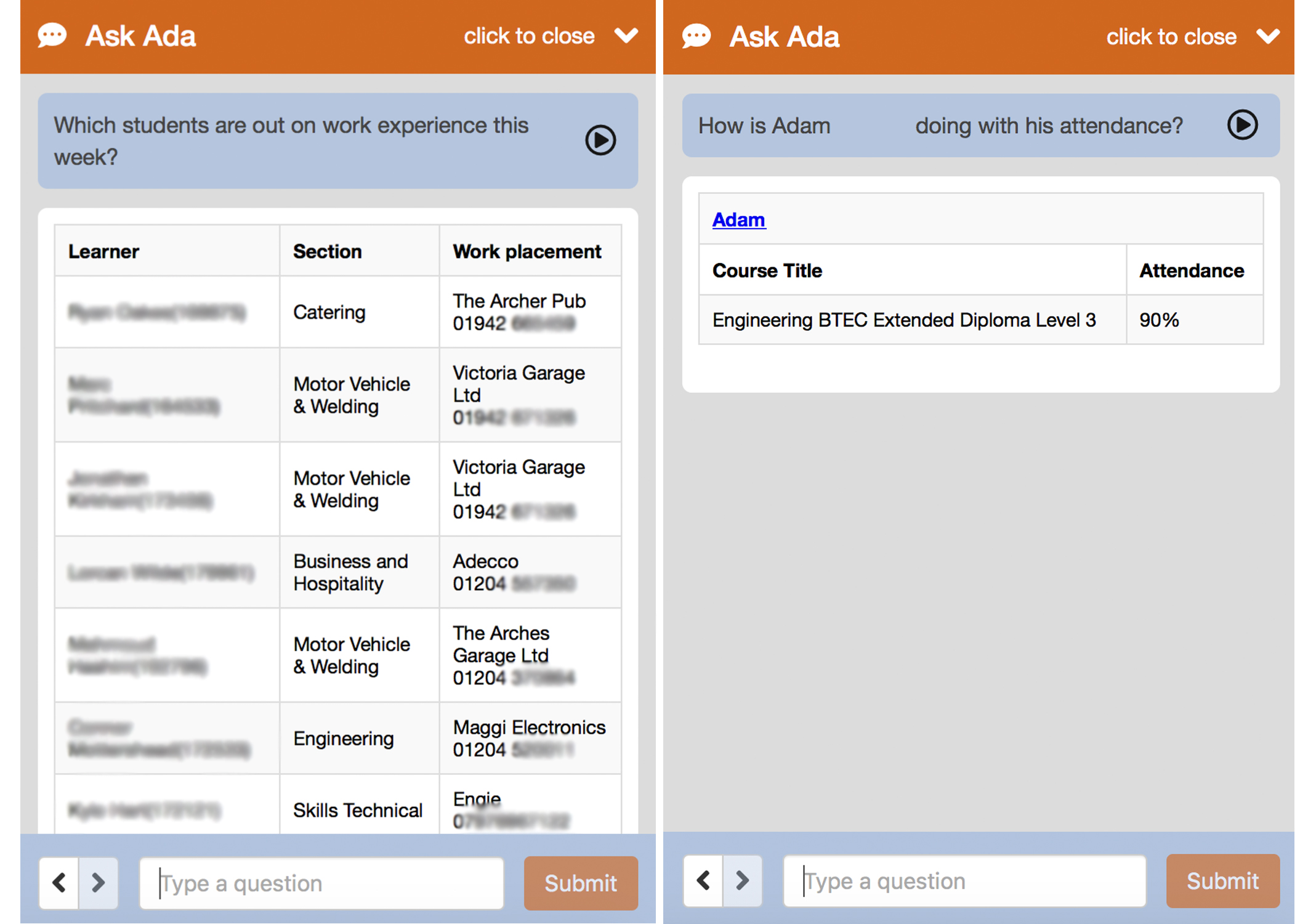The #FutureOfEducation is Conversational: Using #EdTech to Mitigate Complexity and Urgency

The ability to solve the myriad of day-to-day problems that are encountered on our campuses is getting harder and this is exacerbated by the lack of time to solve these problems. So the level of urgency rises.
The coupling of rising complexity and urgency all too often means that teachers, support teams and managers are under huge pressure to maintain services at a high level of quality.
One of the factors that contributes to complexity is the growing volume of data that permeates through our education institutions.
This is especially true if we see every facet of a campus as entities that either produce, consume or manipulate data.
The traditional tools that are used to manage data such as management information systems, CRM systems, business intelligence systems and data dashboards all too often fall short.
In many cases, they exacerbate the problems that are associated with complexity and urgency.
However, the emergence of new tools such as cognitive platforms and the services that leverage natural language processing, understanding, classification and generation look as if they can be used to mitigate complexity and urgency.

As a learning technologist there is certainly no lack of difficult problems that are waiting to solved. Let’s examine how each each of these cognitive platforms and services can be used to lesson complexity and urgency on our campuses.
Cognitive Platforms
We are all familiar with terms such as Software as a Service and Hardware as a Service. The advent of these services helped schools, colleges and universities to afford and spread the use of technology to support every facet of campus life.
The adoption of these services had a profound affect on the way education institutions designed, managed and delivered their services; and it has delivered huge benefits for students who access life long learning in a manner that was unimaginable a century or less ago.
Likewise, as AI as a Service blossoms and becomes more widespread it will be just as transformative.
Many individuals envisage that these platforms will have an irrevocable effect on the education sector; even more so than the introduction of the World Wide Web in the 1990’s.
AI as a Service platforms are a collection of cognitive services that institutions can leverage to solve everyday problems and challenges.
These could entail providing immediacy to students and staff, managing large volumes of structured and unstructured data, assessing student work, monitoring and supporting students through their studies, making sure that everyone is kept up-to-date when supporting students or reducing the burden on teachers, managers and education leaders as they manage their organisations and the students in their care.
Natural Language Processing and Understanding
The advent of the smart speaker and the digital assistants that we are increasingly conversing with are the manifestations of services that utilise natural language processing and natural language understanding. These services are often referred to as conversational services or voice first services.
Conversational services present themselves in a variety of ways on the campus:
1. Service specific chatbots
Vendors who offer student information systems, CRM systems, building management systems, library management systems or learning management systems will roll out chatbots to support end users as they interact with their services.
A student who visits an institution’s library website will be in a position to ask a chatbot for assistance to support the search for library resources or to make book reservations or renewals.
Students will also interact with a campus chatbot or digital assistant when they are working through an online tutorial, when they are engaged with the institution’s learning management system or when they are exploring virtual reality, augmented or mixed reality environments.
Likewise, a member of staff who works in the registrar’s office may use the chatbot to query data on the organisation’s student information system. Whilst the advent of specialist chatbots is welcomed, the student or the teacher will want to access all their services via a single campus chatbot.
This is the strategy that Bolton College is pursuing.
2. Smart speakers and screens
The smart speaker and screen are set to become pervasive. They will be found in campus reception and communal areas, halls of residence, libraries and across all our classrooms and offices.
Students and staff will also use them when they are at home to access campus services. Colleagues at Bolton College have recently enabled student accounts to be authenticated to Amazon smart speakers which will enable students to seek contextualised and personalised responses to their questions.
When using campus services you probably spend most of your time interacting with a traditional graphical user interfaces on your desktop computer, laptop, tablet or smartphone.
As conversational services are gradually introduced to the education sector, you will need to get acquainted with spending a greater proportion of time conversing with smart speakers and screens to carry out your day-to-day jobs at your school, college or university.
If you have a strategic leadership role at your institution, you are advised to explore how conversational services can add value to your students and how these services could be leveraged to empower your employees.
3. Digital assistants native to the smartphone
Students, teachers and support teams will also access their campus chatbots via their smartphones. Colleagues at Bolton College hope to publish iOS and Android apps for the College’s chatbot service in the early part of 2019.
Students and staff will simply talk to their smartphones to garner information to support their work.
Natural Language Classification
The combination of natural language understanding and natural language classification services has the potential to radically alter how teachers mark and grade short and long form student work.
Let’s take one example and see how these services could be used to support the assessment process. A teacher asks her class to describe the main features of a Motte and Bailey castle.
The automatic marking service allows the teacher to classify the expected responses from her class against specific elements of the answer; such as, key dates, descriptions of the Motte, descriptions of the Bailey, construction methods or the different designs and examples of Motte and Bailey castles.
The teacher trains her automatic marking model by providing examples against each of the classes that she has assigned to support this particular online activity.
The teacher details the feedback to be provided to each of her students as they progress through the activity and she also details the benchmark for securing an overall pass on the work.
Once created the automatic marking model for the Motte and Bailey question could be used for a large number of students across the campus. One of the advantages of using automatic marking models is that each student’s answer is fed into the model, enabling the teacher to refine and improve the model’s performance over time.
Teachers benefit from a reduced assessment workload and students benefit from immediate feedback for their work.
Colleagues at Bolton College are currently undertaking a project to support automatic marking. If successful, the automatic marking model will support over 1500 students each year as they complete their work placement evaluations.
We hope to share progress on this project during the course of this academic year.
Natural Language Generation
One of the many challenges that colleagues face on a daily basis is the production of reports. These reports could summarise a student’s progress on a course, a monthly status report on all the students on a given course or a status report on students across a large faculty.
Typically, these reports take time to compile because the information is either dispersed across different individuals or teams or the information is difficult to retrieve from the institution’s dataset.
The advent of natural language generation (NLG) services could reduce the workload of creating reports for teachers, support teams and managers. The advantage of using NLG services is that it converts data to everyday text using predefined rules that have been set by teams across the campus.
The beauty of NLG means that in a matter of seconds, hundreds or thousands of daily or weekly parental reports could be automatically produced by the institution. The same holds true for all internal reports that are required by the school, college or university.
Chatbots can also help teachers and support teams as they search, compile and assimilate large volumes of data.
The following images show two examples were a teacher has conversed with Bolton College’s chatbot service. The image on the left shows a teacher asking Ada about the students who are currently out on work placement.
The image on the right shows the teacher asking about the attendance figure for a particular student. In both cases, the chatbot responds in less than a second with the information that is sought by the teacher.

One of the most interesting aspects of these services is that the teacher uses natural conversation to illicit information.
The teacher is able to access the information that she needs to support her students without having to login to multiple services or to engage with complex user interfaces and she is not required to filter through the information once it is found. It becomes incredibly simple. She just needs to talk to a smartsreen.
If you add up all the time that teachers spend on searching and compiling student data one can easily see how conversational services can free up substantial amounts of time for a busy profession.
Information finally becomes dispersed. Teachers and support teams simply have to converse with their campus chatbot to gain valuable insights to support their work. Individuals no longer have to engage with complex interfaces to gather insights; so the reliance on legacy interfaces disappears.
The nature of human computer interaction will invariably change on our campuses. Our students and teachers will no longer operate networked devices, they will communicate with them in order to complete a task (The Psychology of Human Computer Interaction: Card, Moran and Newell, 1983).
The emergence of these conversational and cognitive services offers us the potential to reduce the level of complexity and urgency that is visible in our schools, colleges and universities.
So let’s start building and embedding these services into our campuses. The future is conversational.
Aftab Hussain, Strategic ILT Lead, Bolton College












Responses